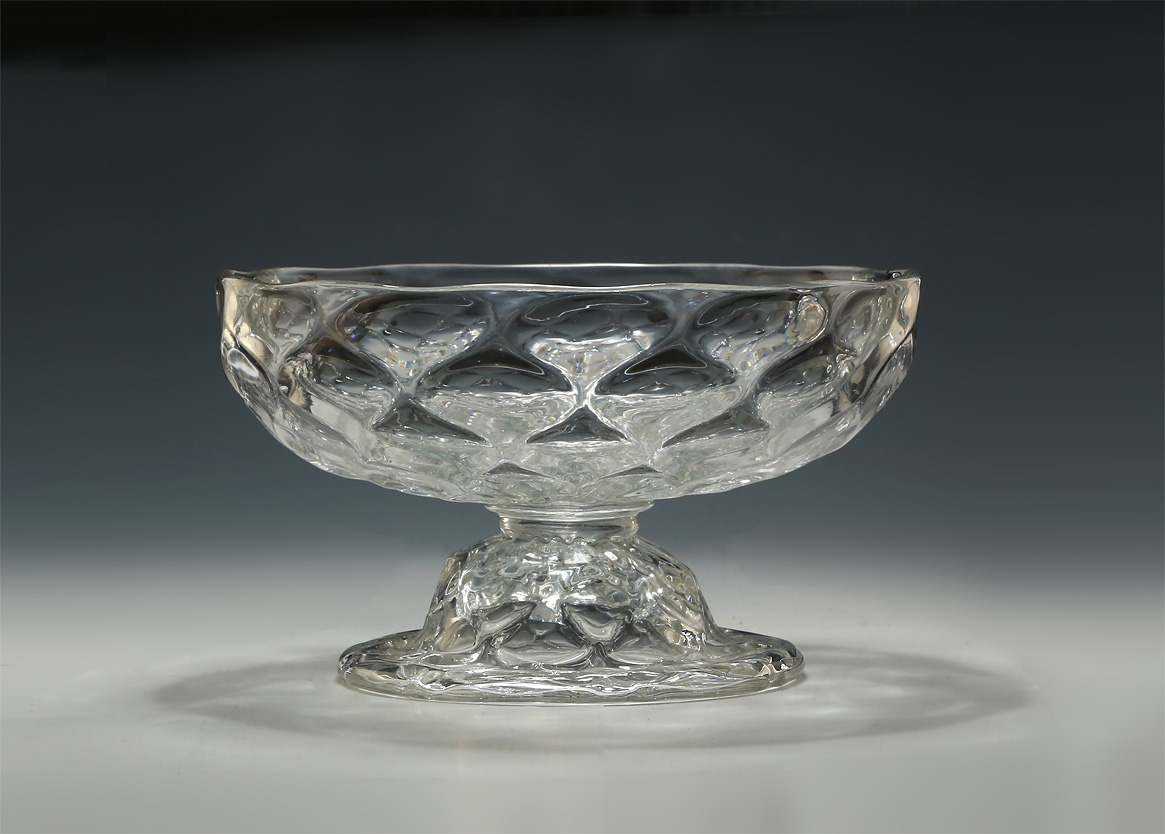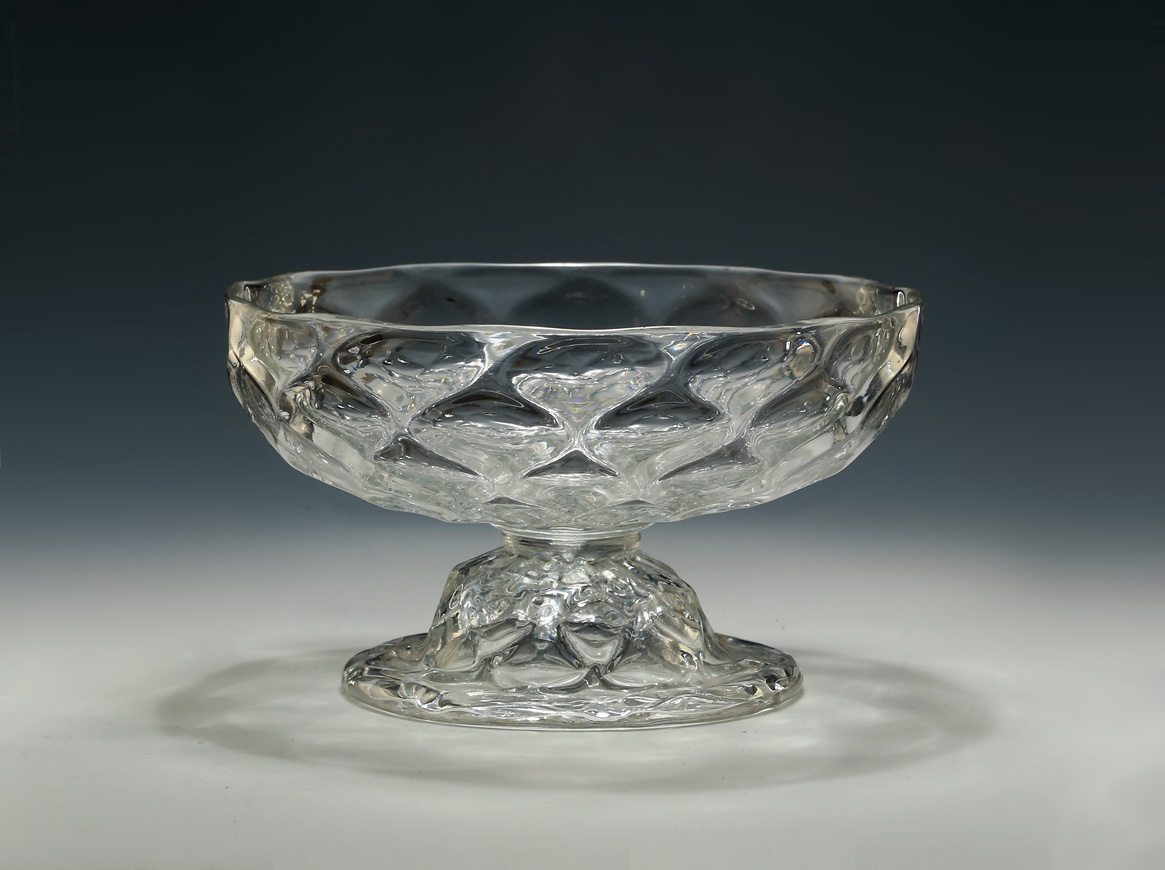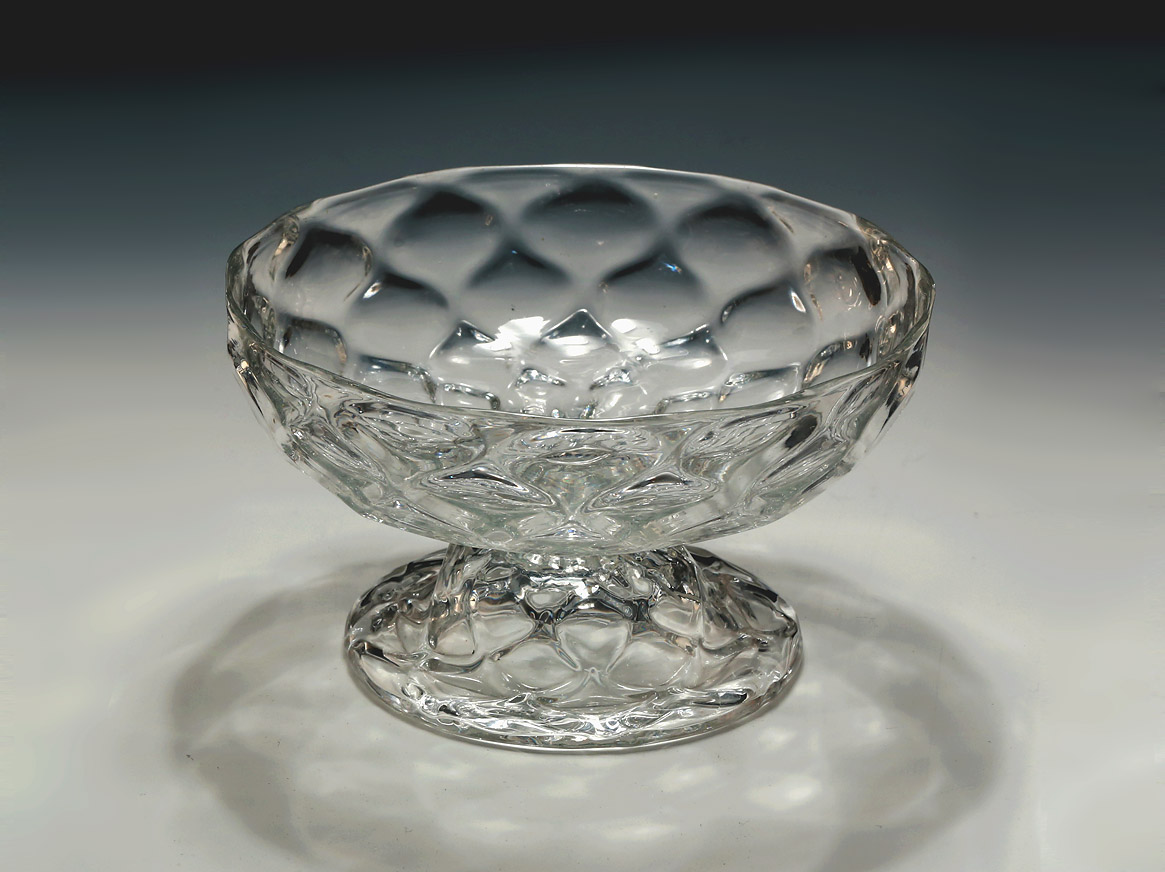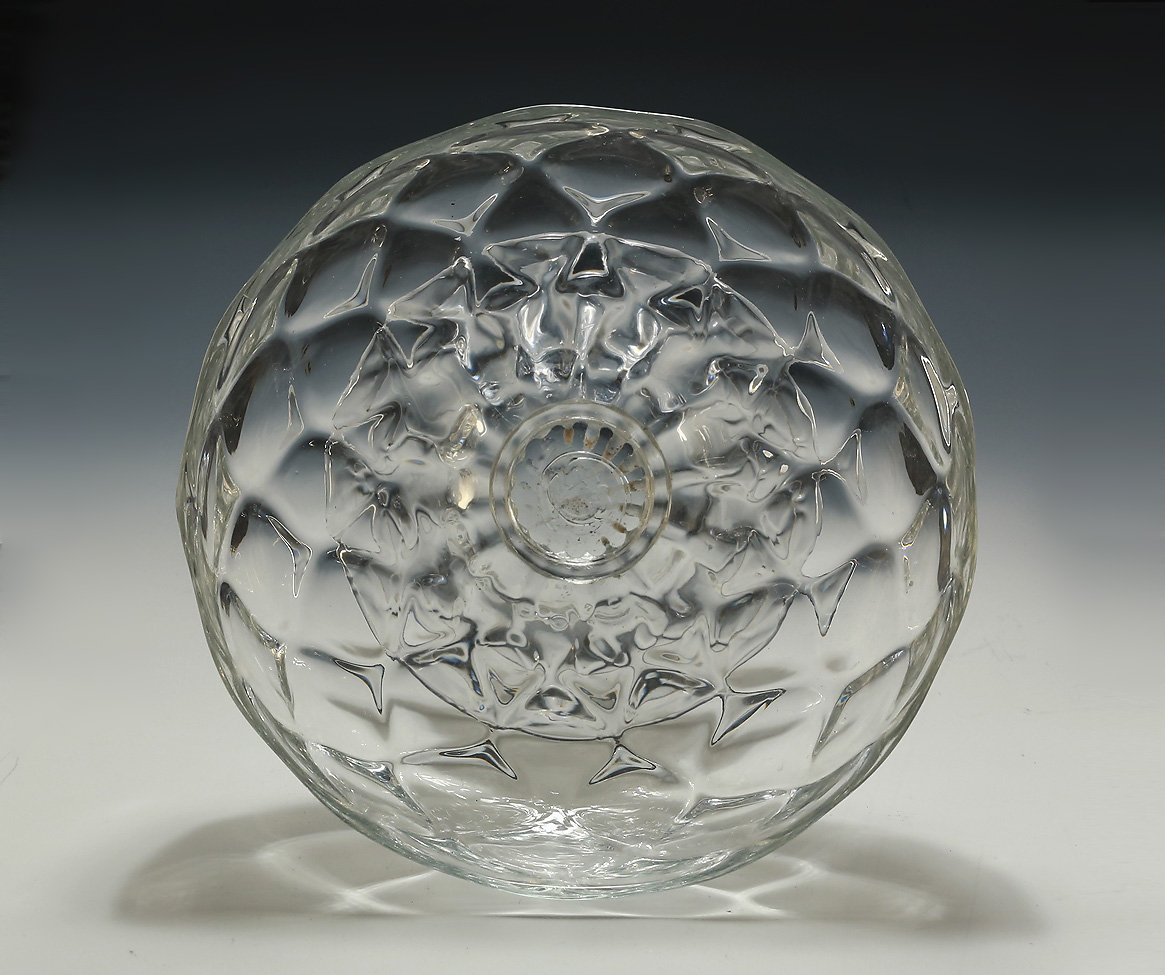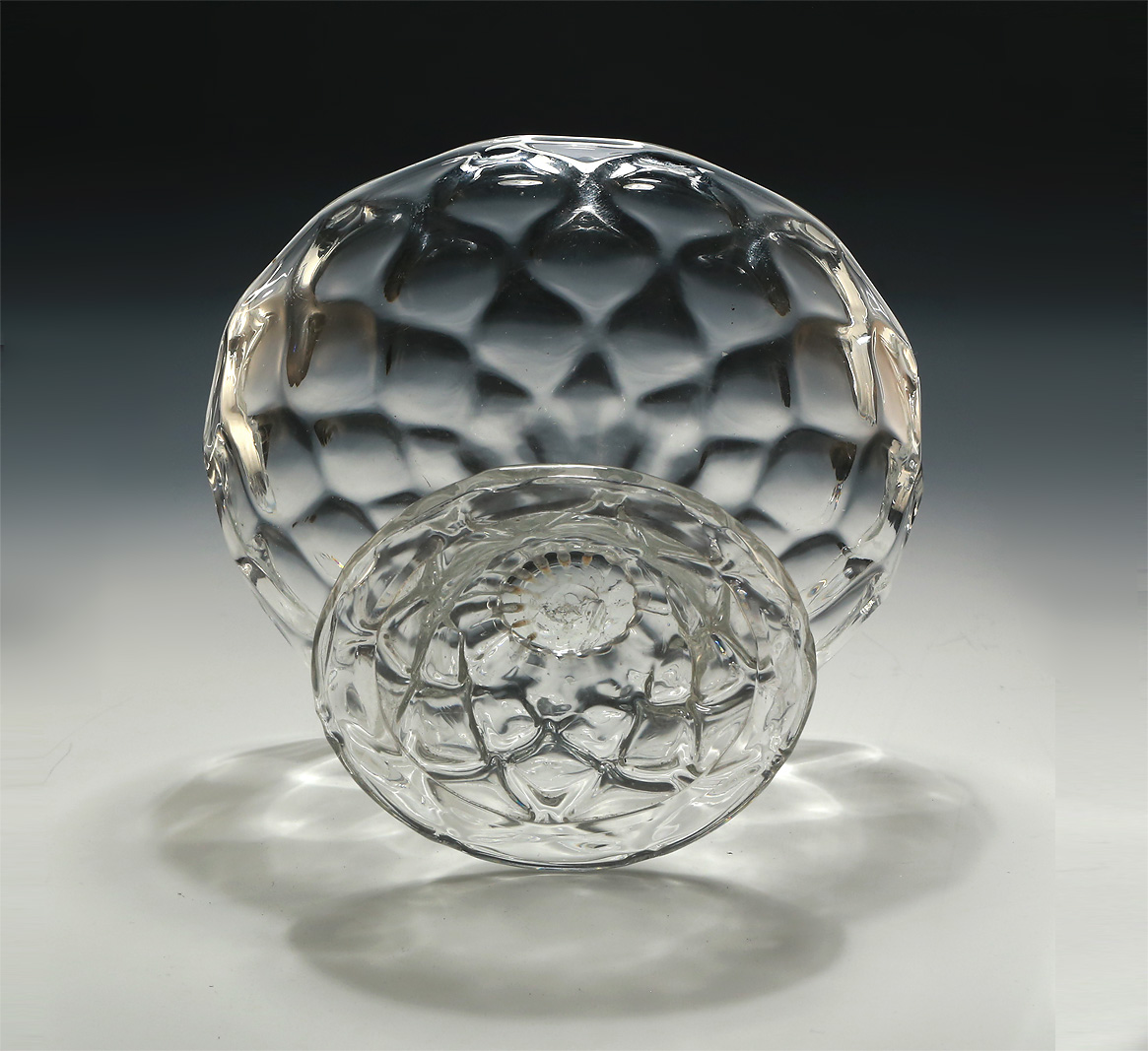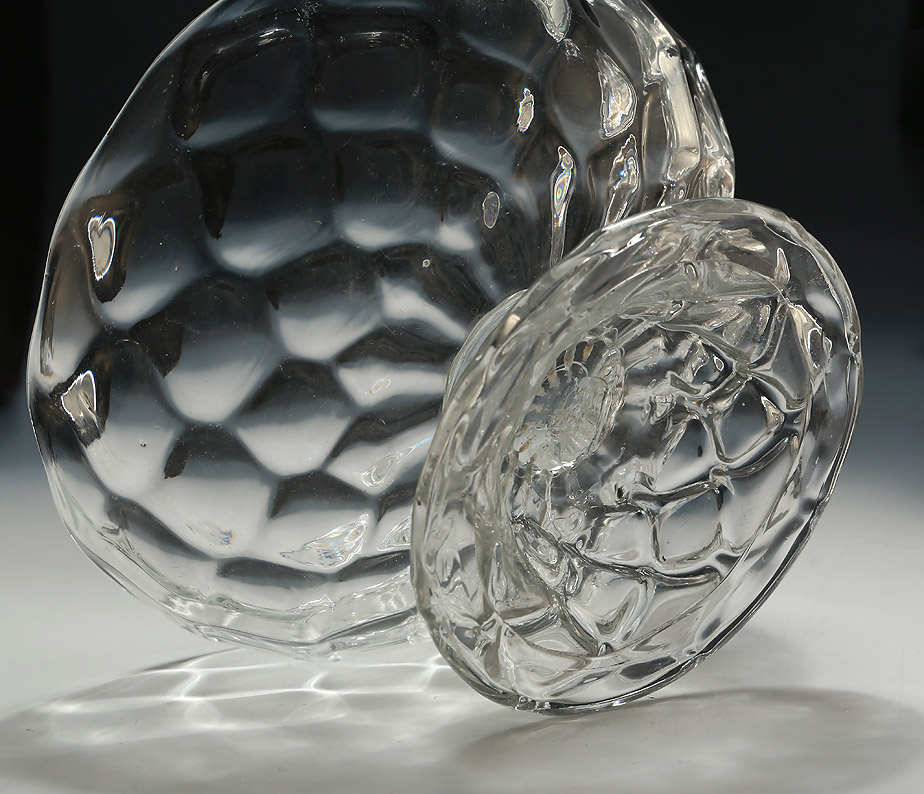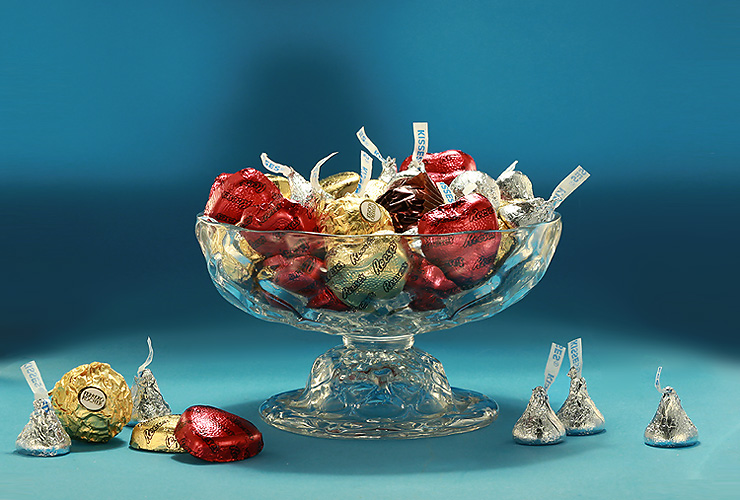Many today think of 'honeycomb moulded' glass as being of the late 18th and 19th centuries.
However, 'pattern-moulded' glass vessels have existed from the Roman era,
including the familiar 'honeycomb moulding'.
Developed in the eastern Mediterranean, this glassware usually dates from the fourth century A.D. forward.
A few honeycomb moulded examples exist even from the 1st century AD, attributed to a rather
mysterious glass-blowing master, Ennion, who apparently looked to architecture for inspiration.
'Honeycomb-moulded' Roman vessels, with relief diamond or hexagonal shapes,
were considered among the most beautiful bowls of the time.
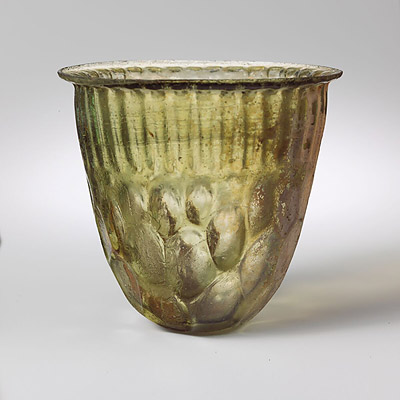
Roman Glass Beaker, Late Imperial Period, 4th5th century AD, with ribbing above honeycomb moulding
Metropolitan Museum, New York NY, USA (Public Domain)
Mould-blown patterned glass, including 'honeycomb'.
was continued by 15th-17th century Venetians, particularly as cups and tazzae.
The 'honeycomb' pattern is also known in 17th century England,
a version of which led to George Ravenscroft's 'nipt diamond waies' glasswares,
in which vertical ribs (or applied threads) were 'nipped' into diamond shaped with pincers.
Below is a detail of a Ravenscroft roemer, c1676-1678, the honeycomb shape formed by 'pincers'.
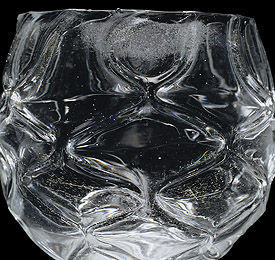
George Ravenscroft, Roemer (about 16761678). CMoG 50.2.2.
Image licensed by The Corning Museum of Glass, Corning, NY
(www.cmog.org), under CC BY-NC-SA 4.0
|
